Author Archive
Tyler Soderstrom Hits It Big With Seven-Year Extension
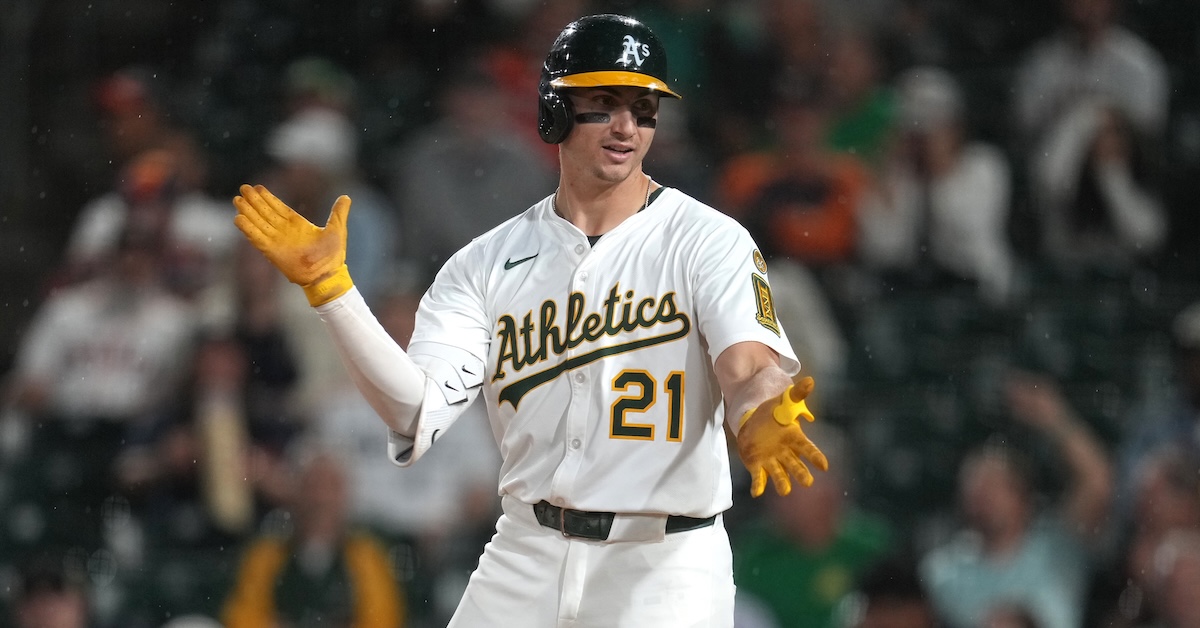
It’s not just the park. The A’s put on a power show in 2025, clobbering 219 homers, getting results up and down the lineup. Nick Kurtz led the way with a superlative rookie season, but he wasn’t alone; Brent Rooker socked 30 bombs, Lawrence Butler added 21 of his own, and Tyler Soderstrom split the difference with 25. Rooker and Butler signed extensions before the season. Kurtz is going to be around forever. Add Soderstrom to that group, too: Over the holidays, he and the A’s agreed to a seven-year, $86 million contract extension, as Jeff Passan first reported.
Soderstrom’s route to stardom is emblematic of this A’s team. He’s always hit well, but figuring out how to plug him into the lineup hasn’t been straightforward. Three years ago, he was a top 25 global prospect as a catcher. Huge, easy power combined with an ability to play the toughest position on the diamond were the selling points. But as he worked through the upper minors and debuted in Oakland, a clear weakness emerged: Soderstrom couldn’t actually catch all that well, and Shea Langeliers, another catching prospect, was an obstacle to everyday playing time behind the dish. After catching 123.2 big league innings that were both statistically and aesthetically ugly enough for the team to pull the plug, Soderstrom was left in search of a position.
In 2024, an early-season minor league stint to work on his defense combined with a mid-season injury meant Soderstrom barely played first base, the new position the A’s selected for him. But between drafting Kurtz and making Rooker a full-time DH, that position didn’t promise much long-term stability. Soderstrom went into 2025 trying to learn left field while also attempting to improve on a lackluster career batting line. A former catcher playing the outfield and maybe not even hitting well? His career was surely on thin ice. Read the rest of this entry »
Cardinals, Red Sox Link up Again in Willson Contreras Trade
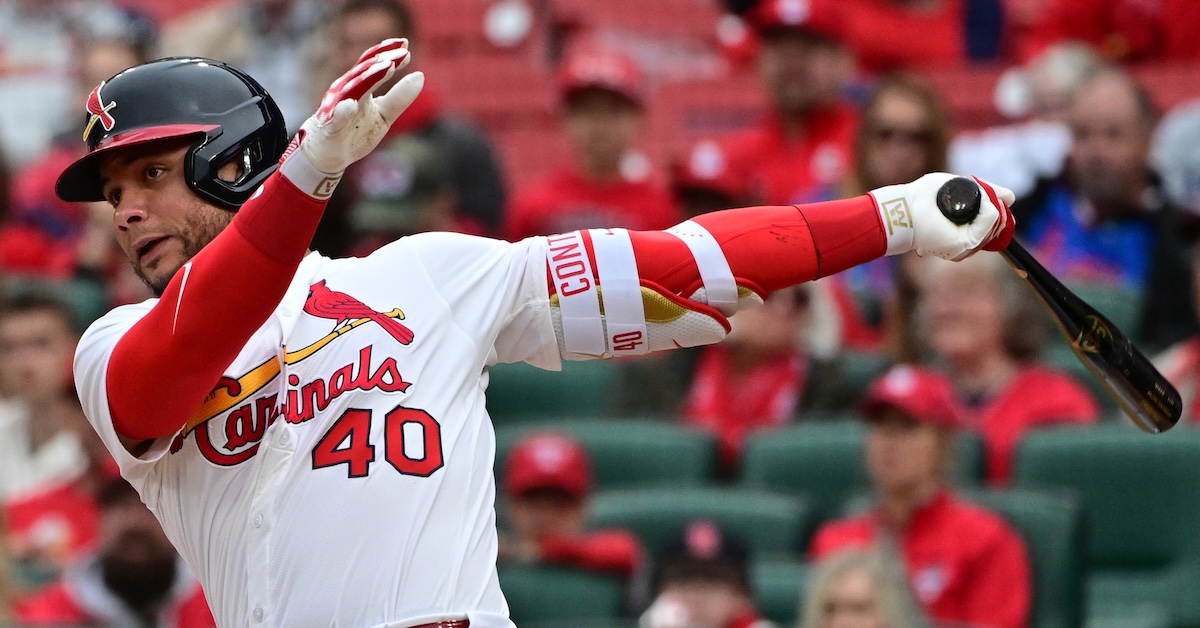
‘Twas the week before Christmas, and all through Fenway, every fan was insistent: “Get a first baseman, today.” Or, well, probably not – why would there be fans at Fenway when there are no games, anyway? Why Christmas week in particular? Why did they construct their sentence awkwardly to suit a rhyme scheme? But forget about how hard it is to open an article – or at least how hard I’ve made it seem with this one. There’s a trade afoot! The Red Sox have acquired first baseman Willson Contreras from the Cardinals in exchange for right-handed starter Hunter Dobbins and righty pitching prospects Yhoiker Fajardo and Blake Aita, as Jeff Passan first reported.
In a free agent market awash in slugging first base/DH types, Contreras flew under the radar this offseason. Kyle Schwarber and Pete Alonso were the top names at the position, and both secured the deals befitting that status. The Red Sox were clearly interested in adding some offense, particularly in the infield, and were linked to both sluggers before they signed elsewhere. But there are more ways to improve your team than on the open market, and a pivot to Contreras soon followed. Read the rest of this entry »
Phillies, Royals Swap Relievers
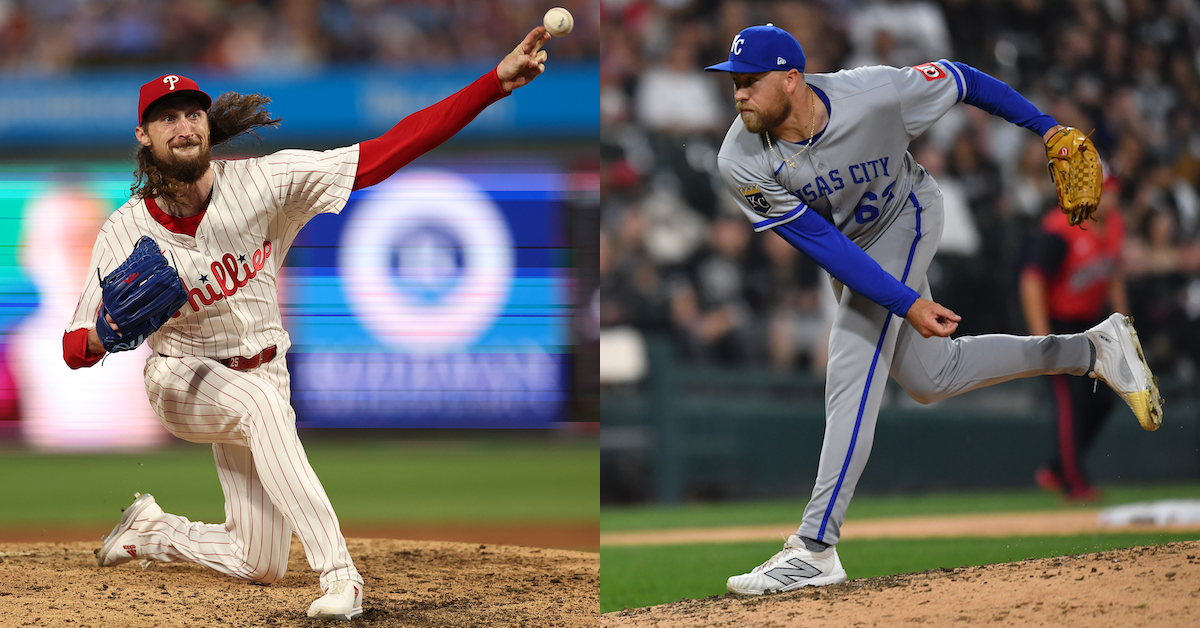
The Phillies made the playoffs in 2025. The Royals nearly did, and certainly hope to play in October in 2026. Teams like that rarely line up on trades, what with both sides aiming to do the same thing and all. But rarely isn’t the same as never. Philadelphia and Kansas City found something they agree on other than their taste in Super Bowl matchups (last year’s every year, naturally), coming together on Friday to swap relievers: Matt Strahm is heading to Kansas City in exchange for Jonathan Bowlan, as Robert Murray first reported.
Trades are all about two teams with mismatched goals. Who would trade a superstar? A team that isn’t competing at the moment and isn’t one or two players away from changing that. Who would let go of a promising outfield prospect? A team that’s set in the outfield and light on the mound. This trade is two playoff contenders trading relievers, so most of those considerations don’t apply. But there’s still a mismatch in goals and resources here; you just have to look a little more closely.
The Phillies bullpen boasts an embarrassment of riches. Jhoan Duran, the closer, is one of the best in the business, a lockdown reliever you can set and forget in the ninth inning. José Alvarado missed most of the 2025 season thanks to a suspension and injury, but he’s an excellent late-inning option in his own right when available, and he should be back at full strength in the upcoming year. It doesn’t stop there; the team recently signed Brad Keller, who broke out as a dominant single-inning option in 2025. Even without Strahm, that’s a fearsome top trio of relievers, perhaps the best in the majors. Read the rest of this entry »
Luke Weaver Transfers At Grand Central, Heads To Queens
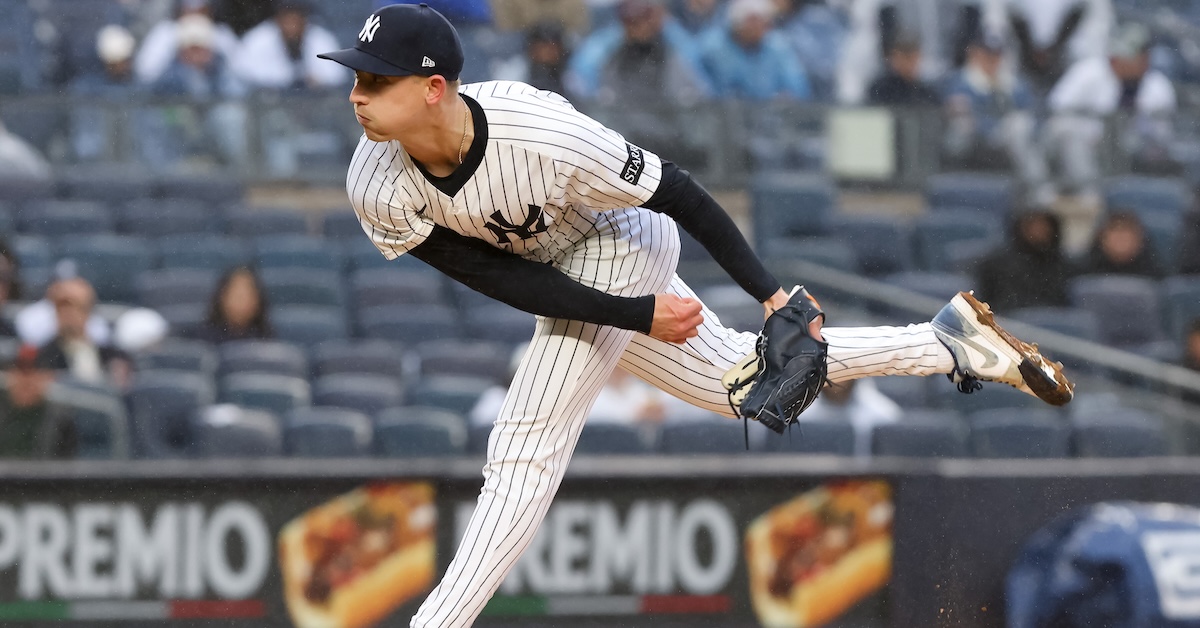
Is Luke Weaver good? I’m asking for a friend of mine who will remain anonymous, initials D.S. It’s a matter of some urgency, he told me. Perhaps – and I, of course, wouldn’t want to speculate – it might be related to a news item first reported by Will Sammon of The Athletic. Weaver and the New York Mets are in agreement on a two-year, $22 million deal that continues to overhaul their bullpen.
Eleven million a year for a quality reliever is a solid rate. Eleven million for a guy who is only a season removed from nearly carrying the Yankees to a World Series title? A screaming buy. Thus, the question in evaluating Weaver’s free agency is simple: Is he the guy who dominated in 2024, or the one whom Aaron Boone launched down the bullpen hierarchy and eventually gave up on in the 2025 postseason?
When the Weaver experience is firing on all cylinders, you watch him pitch and wonder why everyone can’t do it like this. He starts things off with a model-friendly four-seam fastball, 94-95 mph and with prototypical backspinning movement. The combination of velocity, movement, and command turn what might seem like an ordinary pitch into a great primary option. As a starter, Weaver’s fastball was plus but not unhittable. It was held back by subpar velocity, but that was the only shortcoming of an otherwise solid offering. His star turn in 2024 was driven largely by that pitch, with a few ticks of velocity making it a monster instead of merely good.
When Weaver isn’t pounding the strike zone with his fastball, he’s snapping off one of the best changeups in baseball. The superlative cambio has always been his top offering. He broke into the majors as a starter and used the change to survive, throwing it more than a quarter of the time without any other solid secondaries to speak of. It’s so good that it’s no mere platoon pitch, and it’s gotten better since his transition to the bullpen. The same few ticks of extra juice that turned his fastball unhittable also gave batters nightmares with his offspeed offerings. Read the rest of this entry »
Here’s How I’m Planning on Evaluating Free Agency Predictions
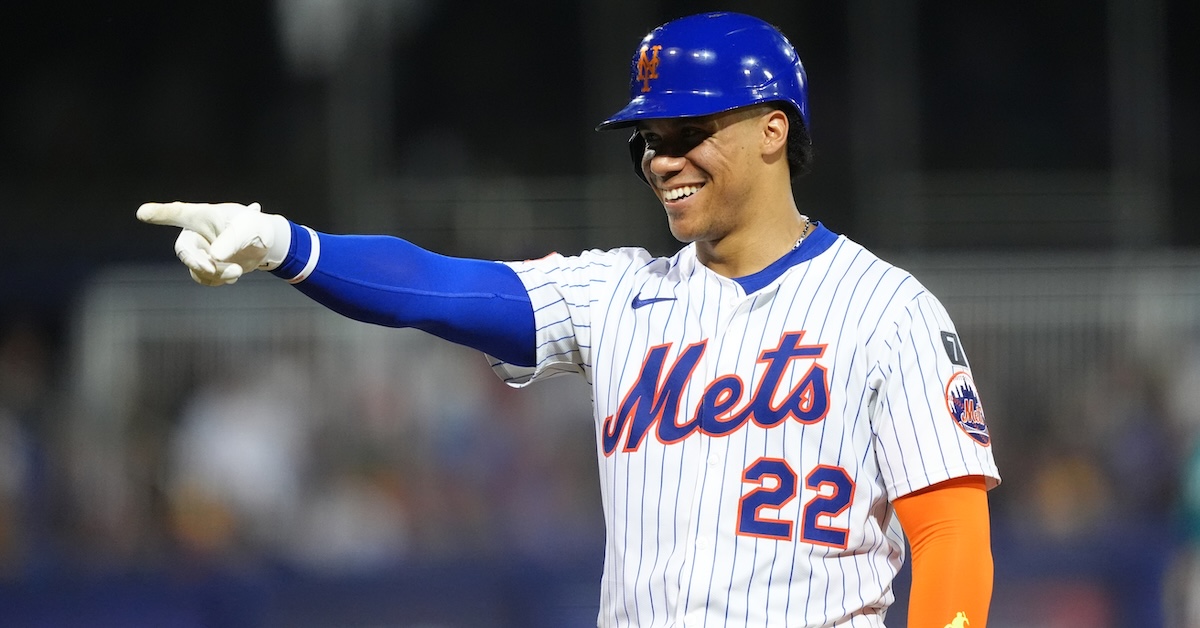
Every year, FanGraphs (in this case, I am FanGraph) releases contract predictions for our top 50 free agents. We also run a contract crowdsourcing project for those players, and I have to say, the crowd is spectacularly good at this. Last year, for example, I looked through all of the various predictions across the internet and awarded the crowd the title of best overall prognosticator.
But honestly, the winner of that award was hard to determine because I didn’t have a great way to evaluate the various predictions. Why so difficult? Because not every deal ended up being for the length we all predicted. As an example, I predicted 12 years and $48 million per year for Juan Soto, while the crowd predicted 13 years and $45 million per year. Soto signed a deal that was for 15 years and $51 million per year. Who was closest to the mark? It’s not immediately clear. I did better on the AAV, but the crowd did better on the number of years. There’s no obvious determining factor to use when comparing the two. Even worse, the two are inversely correlated; more years generally means a lower AAV. The two predictions seem pretty similar to me, but I had to grade AAVs and total guarantees separately, and that just felt clunky and confusing.
After some time bouncing ideas off my friends and colleagues, and plenty of time in the FanGraphs Idea Generation Lab (not real, but man, it should be), I think I have a solution. It’s simple, really. Evaluating contract predictions would be much easier if the predictions and the actual contract were for the same length, so I made them all the same length. Read the rest of this entry »
Reliever Roundup: Milner, Leiter, and Holderman Sign New Deals
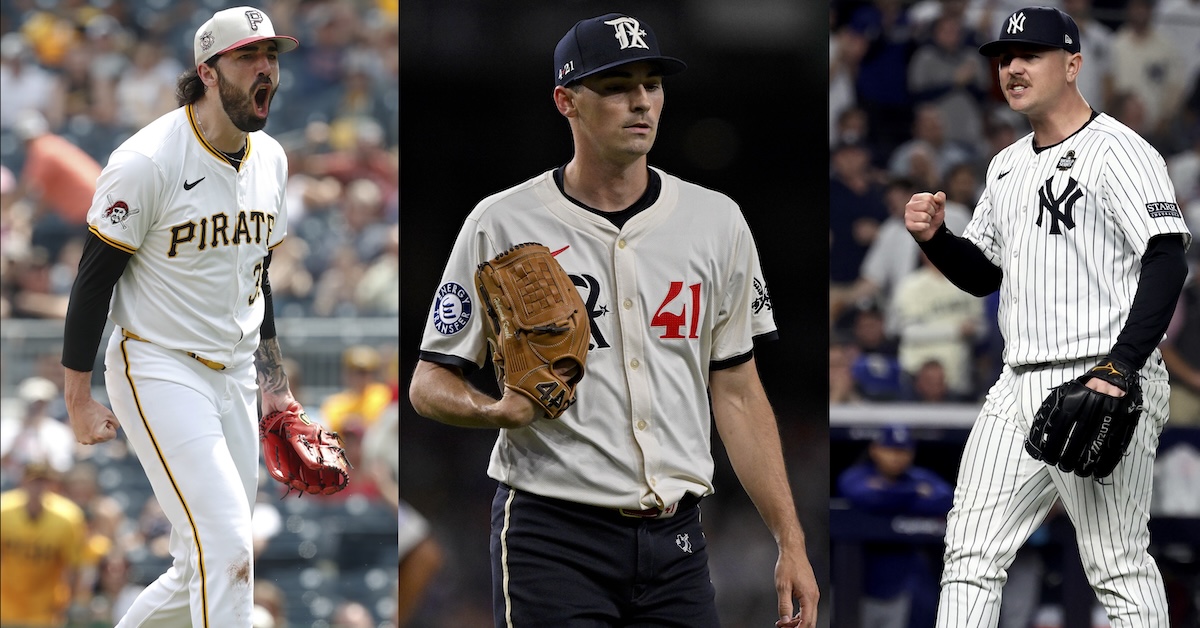
Every winter, the shiniest free agents on the market capture the attention of baseball fans everywhere. “Ooh, could you imagine Kyle Tucker in my team’s colors?” That’s a fun conversation regardless of which team you root for. But most teams aren’t going to sign Kyle Tucker. Most teams aren’t going to sign a top 10 free agent, period. Indeed, come June and July, there’s a good chance that the free agent signing you’re going to either laud or rue will involve some reliever you’d never heard of six months prior. So let’s meet a batch of pitchers who are going to make fans remember their name, one way or another, in 2026: Hoby Milner, Mark Leiter Jr., and Colin Holderman.
I used to think of Hoby Milner as one of the unending wave of Brewers who looked unbeatable in navy and gold and unspectacular elsewhere, but as it turns out, that was unfair to him. He departed the upper Midwest for the first time since 2020 last winter, signing a $3 million deal with the Texas Rangers after Milwaukee non-tendered him. Far from crashing out, though, he spun another solid season, his fourth in a row, while handling 70.1 innings of the highest-leverage work of his career. He finished the season with a 3.84 ERA and a 3.39 FIP, pretty much a dead ringer for his career numbers.
Why, then, is his deal with the Chicago Cubs for just one year and $3.75 million? It’s because he’s an extreme lefty specialist, and that skill set generally comes with a limited market. Milner isn’t a traditional late-inning reliever, a matchup-proof flamethrower. He has enormous platoon splits, triple the league average for lefty pitchers over a fairly substantial sample. It’s for exactly the reason you’d expect: Milner throws sidearm and with little velocity, relying on a sweeper that he throws nearly half the time against lefties to tie them into knots. Read the rest of this entry »
Blue Jays Continue Bullpen Overhaul, Sign Tyler Rogers
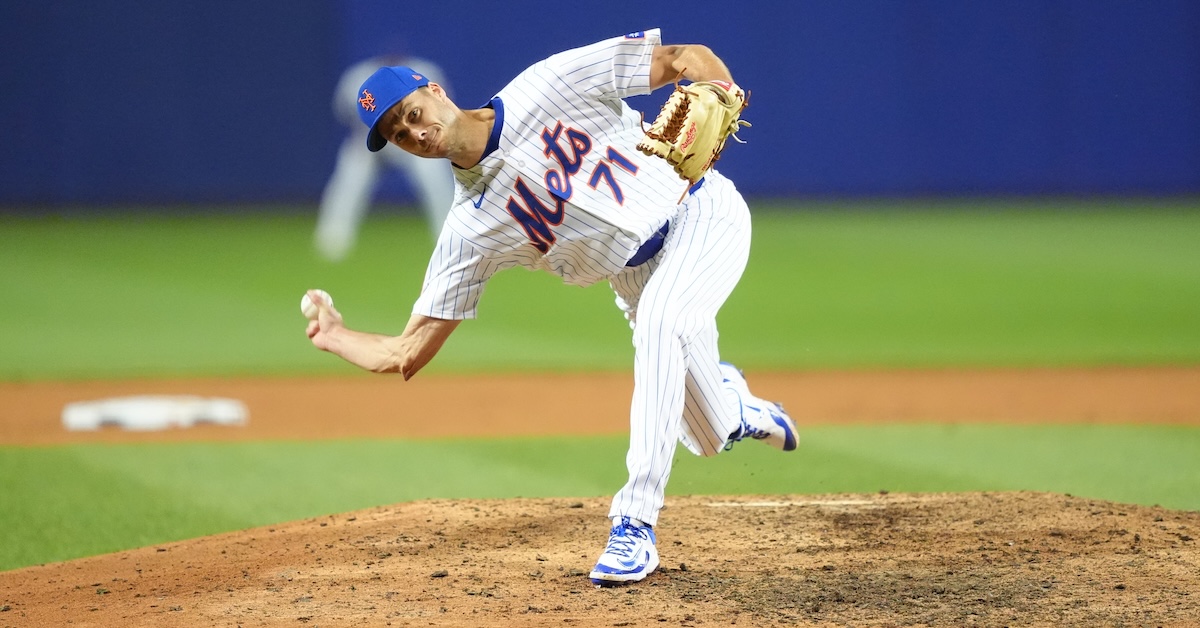
Two months ago, the Blue Jays marauded their way through the playoffs despite a bullpen they preferred not to touch with a thirty-nine-and-a-half-foot pole. They started the offseason by adding to the rotation, with Dylan Cease the big name acquisition and KBO MVP Cody Ponce an interesting flier. Now, they’ve turned their attention to relief pitching, and they’re working every angle there. They selected hard-throwing relief option Spencer Miles in the Rule 5 draft, traded for sidearmer Chase Lee, and late last week added the piece de resistance, the weirdest reliever in baseball. That’s right: Tyler Rogers and Toronto agreed to terms on a three-year, $37 million deal with a vesting option that could push it to four years and $48 million.
I’m legally obligated to lead any article about Rogers by mentioning his unconventional delivery. He throws upside down, it’s true. He throws in the low-to-mid-80s as a result, with movement that resembles nothing else in baseball. It’s hard to wrap your head around how his pitches move. His slider has huge positive vertical break; it’s a regular slider turned upside down. His fastball, naturally enough, breaks downward, which results in some incredibly counter-intuitive at-bats; despite being about 10 miles an hour faster, it falls meaningfully more than the slider on its path homeward.
With that out of the way, forget what Rogers throws like for a while. I’m sure that’s interesting to the Blue Jays, but what actually matters at the end of the day is how effective he is. He’s very effective, as it turns out. His career 2.76 ERA is flattered slightly by all his years calling spacious Oracle Park home, but not as much as you’d think. His 67 ERA- is a top-15 mark among relievers since his 2019 debut, and I actually think ERA- punishes him, because his specific game doesn’t benefit as much as most pitchers from a big outfield. He gets a ton of grounders. He perennially runs a low BABIP allowed, and it’s no fluke; batters just can’t square him up. Read the rest of this entry »
You Can’t Spell Braves Without Some of the Letters in Yastrzemski
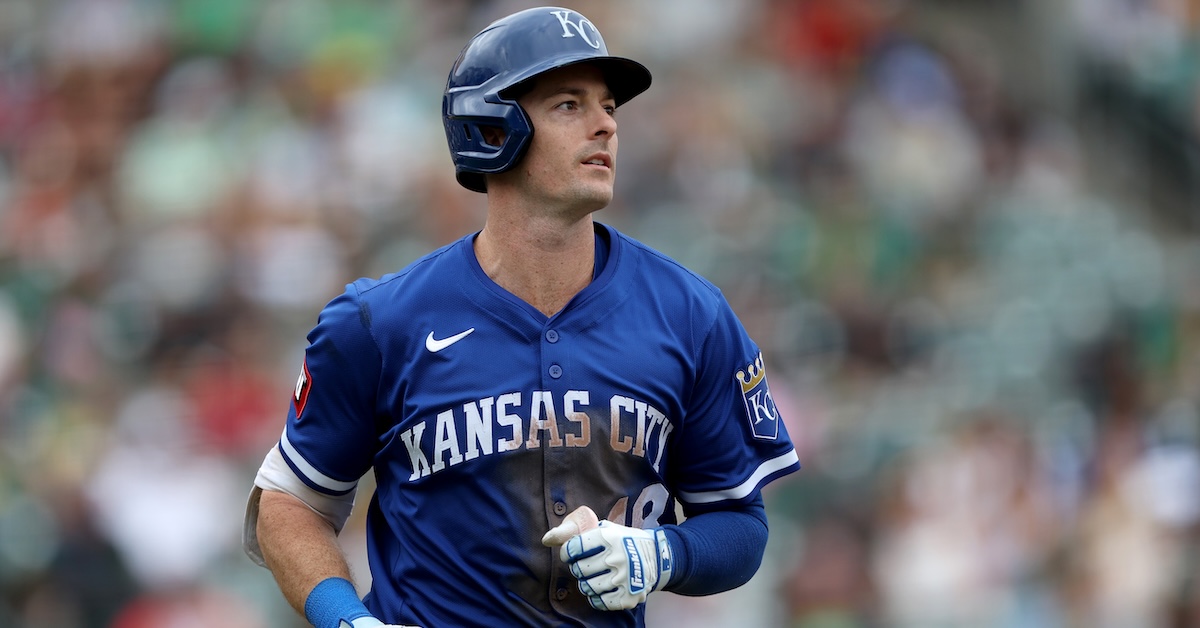
The Winter Meetings historically mark the beginning of the signing period for marquee free agents, and this week has seen several stars agreeing to big contracts. But there were also plenty of little deals among the titans, and one of them in particular fascinates me. That deal: The Braves signed Mike Yastrzemski to a two-year, $23 million contract, with a club option for a third year, as Jon Heyman first reported.
There’s a lot to unpack with this one, but we might as well start with Yastrzemski. The 35-year-old outfielder is nothing if not consistent. In a 2025 split between the Giants and the Royals after a deadline deal, he logged his seventh straight season with a WAR total between 1.5 and 2.5. It was his fifth straight year with a wRC+ between 99 and 111, and the third of those five years where it was exactly 106. He played his usual solid outfield defense, and the Royals even felt confident enough in him to occasionally use him in center field. If he’s your best outfielder, your outfield probably isn’t all that good. If he’s your third-best guy, it’s probably great.
But while Yastrzemski’s season looked like the others in terms of his overall line, it was a tale of two halves. In San Francisco, he started slowly and never really got going. He posted the worst contact quality marks of his career while struggling to a below-average line. Then he went to Kansas City and went on a huge heater, for lack of a better way to describe it. Everything got better all at once. Yastrzemski’s barrel rate increased from 7.1% to 10.9% at the same time that his swinging strike rate declined from 8.0% to 5.4%. That’s a neat trick if you can pull it off, and as a result, he hit more homers in KC than in SF in half the plate appearances, all while cutting his strikeout rate to an otherworldly 11.8% and also walking 13.4% of the time. Read the rest of this entry »
Emilio Pagán Returns to Cincinnati
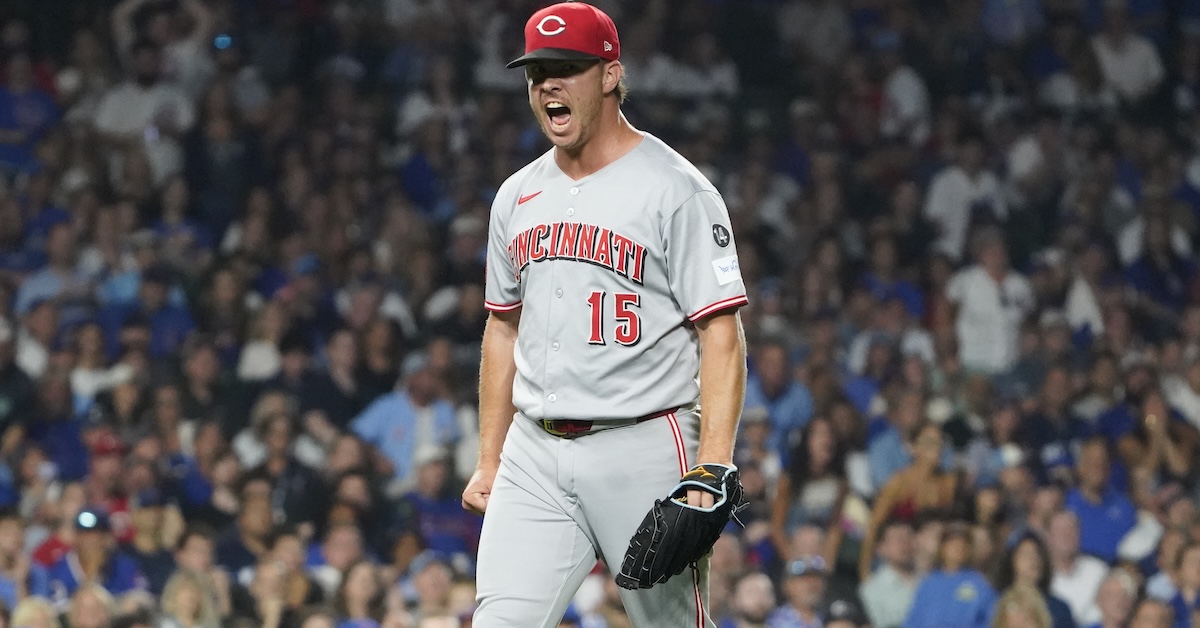
It’s been a busy December for free agent relievers. Ryan Helsley and Devin Williams, two of the most interesting names on the market, each signed with new clubs, and they each got multi-year guarantees despite shaky 2025 results. The next shoe to drop wasn’t quite as heralded of an option, but he too got multiple years and beat market consensus. The signing in question: Emilio Pagán and the Reds agreed to a two-year, $20 million deal, with an opt out after the first year.
Pagán was a far more effective reliever in 2025 than either of the two splashier names ahead of him. He had one of the best seasons of his career at age 34, in fact: 68 2/3 innings pitched, a 2.88 ERA and 3.72 FIP in hitter-friendly Cincinnati, and 32 saves in his first full-time closing job since 2019. He bounced back from an injury-interrupted 2024 with better fastball velocity and better pitch shape across the board, and got richly rewarded for it with a 30% strikeout rate. Is he homer-prone? You bet, thanks to a 0.51 GB/FB ratio. But a .200 BABIP and a solid HR/FB% (10.8%) meant that he actually allowed fewer homers per nine innings (1.31) than his career mark (1.51), and not by a small amount, despite pitching in a launching pad.
When things are going well for him, Pagán makes everyone think they can hit a home run, then pulls the rug out. He runs his four-seamer high and spots a heavy splitter off of it, a classic fly ball pitcher mix. It’s one of those strategies that looks awful when it isn’t working, and yet seems to come through most of the time anyway. More specifically, Pagán went through a three-year stretch of terrible form from 2020-2022, posting a 4.61 ERA and 4.71 FIP. Then he broke out in 2023 and has been solid since. The weirdest part of it all? His stuff and command metrics barely budged between those two wildly different stretches.
Reversals like that go a long way toward explaining why reliever performance is so difficult to predict. When Pagán has it, he’s a worthy late-inning reliever. His ERA- was 40th among relievers last year, and it’s 60th over the past three years, even with his ineffective 2024 in the mix. He’s pitched like you’d expect a closer or setup man to, in other words. His FIP tells a broadly similar story, and I’m willing to believe that pitchers with his extreme tendencies outperform their FIP in the long run. If you get good Pagán, he’s a very useful bullpen piece, the kind any team would love to have in the bullpen and many fringe contenders would love to have as a closer.
That’s the calculus from the Reds’ perspective. They’ve managed their payroll tightly in the early years of Elly De La Cruz’s team control window, hovering around the $100 million mark with wiggle room in either direction. With that budget constraint in mind, the top five or so relievers in this free agency class were presumably off the board. The next tier down is a mixture of interesting pop-up arms, aging closers, and reclamation projects. Would you rather have Kenley Jansen or Pagán? Seranthony Domínguez? Kyle Finnegan? Phil Maton? Maybe Drew Pomeranz? I think I’d take Pagán or Jansen over the field – I ranked them that way in my Top 50 Free Agents list – and as an added bonus, he’s already familiar with Cincinnati. I’d take Raisel Iglesias over him – rankings, again – but he signed for one year and $16 million, probably outside of this team’s price range. The Reds probably could’ve gotten some solid lefty specialists for the $10 million or so annual salary that they gave Pagán, but that’s not what they were in the market for this winter. They needed a bankable closer, and in the aisle they were shopping in, there weren’t that many options.
This team really does need relief arms. The Reds didn’t have to cover many bullpen innings in 2025, but even then they struggled to piece it all together. Pagán, Tony Santillan, and Graham Ashcraft formed an effective three-headed monster at the top, but the rest of the pen was ineffective even in limited time. With a bandbox for a home stadium, it’s hard to expect a similarly limited need for relief pitching in 2026. This was the path of least resistance for a team that really does need to do something to challenge for the NL Central title in 2026 and build on its surprising 2025 Wild Card berth.
Now, the risks? They’re real. It was only a year ago, after his down 2024 performance, that Cincinnati fans were lamenting Pagán’s decision to pick up his player option for 2025. More innings and a .200 BABIP turned that frown upside down, but it’s not like it’s impossible to imagine an ineffective Pagán. Would you be shocked if he had an uneven, homer-prone 55 innings in 2026 and then picked up his option? I certainly wouldn’t be. We just saw that!
That leaves me in the situation of liking this deal more for Pagán than for the Reds, and yet I’d make this offer if I were in their shoes anyway. Figuring out which relievers will be good in a year’s time is incredibly difficult. If it were easy to solve, the Dodgers wouldn’t have signed Tanner Scott and Blake Treinen last winter and then spent this entire October hiding them. Despite that difficulty, relievers are integral to a contending club. If you aren’t winning the close games, it’s hard to make the playoffs. The Reds likely wouldn’t have done that last year if not for Pagán.
With that backdrop, what were the Reds supposed to do? Sign a different, similar guy for slightly less? Sign two reclamation projects on one-year, $5 million deals? It’s not even like the second year is that much of a disaster; in a year’s time, they’re going to be contending with a core built around De La Cruz and looking for relievers, and I don’t think the market rate is likely to plummet in the meantime or anything. Sure, you might get bad Pagán in 2026 and then have him opt in, but the inherent volatility of relievers means that even that isn’t a tragedy. It worked out last time!
There’s some chance that Cincinnati could have waited longer, negotiated more stingily, and reached a slightly more team-friendly deal with him. So far, Pagán is the early signing whose market has most outstripped my projections. But who cares? What were the Reds going to do, save a million dollars or two? From their perspective, the risks were greater, because if they dragged their feet in negotiating with Pagán and he signed elsewhere, they’d suddenly be sifting through a variety of relievers they’re presumably less interested in with a strong need to find a deal. I’d prefer to overpay slightly for a guy I’m comfortable with than hunt for unknown bargains to fill an essential role, and it seems the Cincinnati front office thinks similarly.
I’m not convinced that this is a great long-term way to run a team. It certainly wouldn’t be my preference in a vacuum; I’m a Rays/Dodgers/Brewers-style bullpen guy at heart. I love reclamation projects and throwing a lot of relievers at the wall to see what sticks. I love betting on guys with elite stuff and seeing if they can figure out how to throw strikes, or betting on guys with elite command and seeing if they can figure out how to throw harder.
I’m also not running the Reds, staring at two superstars in De La Cruz and Hunter Greene and trying to make the playoffs again after a miracle run. Sure, it would be great to build an incredible pitching development system from the ground up. But it’s December, and the season starts in four months, and that’s not enough time to overhaul an entire organization, not even close. The Reds needed a reliever. They got a guy they’re comfortable with at a rate that won’t force them to cut back elsewhere. Maybe it’s a slight overpay, and maybe he’s more volatile than his 2025 results would suggest, but for the Reds? He’s just what they needed.
